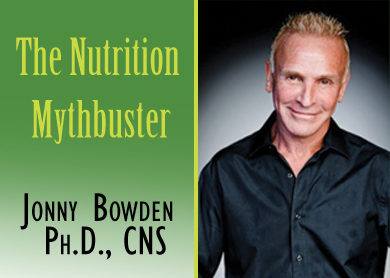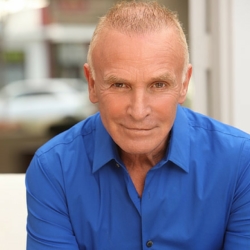I’m tempted to start this article with the words, “Here we go again.”
The World Health Organization (WHO) recently came out with a resport resulting in a glut of headlines all sounding something like this: “Bacon Causes Cancer.”
And, since I’ve made my love for bacon pretty well-known—in fact, I’m about to put up a (free) webinar titled, “Why a Top Nutritionist Eats Bacon” (and no, I’m not kidding)—you can imagine that I’ve gotten more than a few emails asking what I think about this whole cancer business.
After all, the WHO took the radical step of classifying cured meats and processed meats as a carcinogen, basically putting them in the same class as alcohol and asbestos. And arsenic. And tobacco.
(I’ll bite my tongue and let that previous paragraph stand without editorial comment. Never let it be said that I’m incapable of modest restraint.)
So anyway, you would certainly be forgiven for thinking to yourself, sure, Dr. Jonny’s going to try to discredit the WHO report and make a case for why we should ignore it. What would you expect from a bacon lover?
Actually, that’s not what I’m going to do.
When evidence comes out that questions some of the things I believe are true, I’m always willing to look at it.
And I’m willing to look at the “bacon causes cancer” study.
Which I did.
And it does not say that bacon causes cancer at all. No responsible scientist would call a weak association in an epidemiological study a “cause." For the record, smoking increases the risk of lung cancer by 2,500%. An 18% increased risk of cancer linked to eating bacon? From an observational study? Let’s get real.
Here’s what happened.
In a large epidemiological study—that is, an observational study, not a clinical one—it was found that eating two slices of bacon a day increased your statistical risk of getting colorectal cancer by 18%.
Now, don’t get me wrong. I’d just as well not see any association with cancer at all. But, let’s get real and say the truth about exactly what an 18% increase in cancer risk really means. Sadly, it’s not what most people think it means.
Okay, now I’m going to ask you to do me a favor here. I’m going to ask you not to bail on me when I talk about a little math. I know everyone’s eyes glaze over at the notion of fractions and percentages and multiplication. I get it. But really, there’s no other way to understand exactly what an 18% increase in risk for cancer means unless you do this next step with me.
So, here’s the basic explanation of how to compute increased odds. And it starts with an example of “odds” that absolutely everybody understands: tossing a coin.
If I flip a coin, my chances of getting heads is 50% and my chances of getting tails is 50%. It’s very simple. One out of two times, it’s gonna be heads; one out of two times it’s gonna be tails, and that’s all she wrote.
Now, let’s say I meet up with a smart casino hustler who offers to sell me a special coin that’s “fixed” so it has increased odds of getting heads. Let’s say his coin increases my odds of getting heads by 25%.
Most people who were not forced to take three semesters of statistics and research design believe that the coin now has a 75% chance of getting heads—the original 50% plus the additional 25%.
No, grasshopper. It’s not like that at all. Not even close.
When you increase (or decrease) someone’s odds of having an event happen—whether it be heads on a coin toss or getting colorectal cancer—you always compute that increase based on the original odds, much like when you pay a tax at the restaurant. You pay it on the bill. The bill is like your baseline; it’s the number on which the tax is computed. Your tip (20%) is usually computed based on the bill—the baseline. You always start with the baseline when you’re computing a percentage to add on (or take off.)
Then, calculating the actual increase is a two-step process:
1. Start with baseline odds: in the case of the coin toss, 50%
2. Multiply the baseline odds (50%) by the Increase percentage (25%). In this case, the increase is ¼ of the total, so you basically want to find ¼ of 50% which is 12.5%.
3. Add the baseline odds (50%) together with the increase (12.5%) and you get 62.5%. With a fixed coin, your odds of getting heads has gone up to 62.5%
With me so far?
OK, so what are the baseline odds of getting colon cancer?
Don’t worry, I looked it up for you*. It’s about 5 in 100. About 5 in 100 adults will get colon cancer all things being equal. So anything that increases your risk of getting colon cancer, or decreases your risk of getting colon cancer has to be based on that baseline of 5 in 100.
So, eating bacon increases your risk by 18%.
Eat bacon and your odds go from 5 in 100 up to 5.9 in 100.
So let’s be clear. Your risk without eating bacon is 5 in 100. By adding that 18% increase—think of it as a “tax” on 5—you now have a risk of 5.9 out of 100 chances of getting colon cancer.
Said another way: “The WHO study showed that If you don’t eat bacon, you have a 95% chance of not getting colon cancer. If you do however, enjoy bacon, you have a 94.1% chance of not getting colon cancer.”
Would you have the same reaction if the media had reported the study using those statistics? Because they’re equally true, aren’t they?
Let’s never be afraid to look at evidence that threatens our beliefs. That’s how we grow and expand.
But let’s tell the truth about that evidence and not pretend it says something that it doesn’t just because it makes for a sexier headline.
In my webinar, I’ll go over some other objections to bacon eating—including one that is absolutely legitimate (and four that aren’t).
Warmly,
Jb
*P.S.: I lied about the odds. Your normal, non-bacon-eating odds of getting colon cancer aren’t 5 in 100. They’re actually, in the United States, 43 in 100,000, (a 0.043% chance). So, your real baseline risk—without eating bacon—is 0.043%, and with bacon, it rises to 0.051%.
Please forgive me, but you would never sit still for the math if I had used the real numbers.
_________________________________________________________________
 Jonny Bowden, “the Nutrition Myth Buster”™ is a board-certified nutritionist and the best-selling author of The Great Cholesterol Myth and 13 other books. Visit him at www.jonnybowden.com. Jonny Bowden’s latest book—written with Steven Masley, MD—is called “Smart Fat” and is available now for pre-order on Amazon.
Jonny Bowden, “the Nutrition Myth Buster”™ is a board-certified nutritionist and the best-selling author of The Great Cholesterol Myth and 13 other books. Visit him at www.jonnybowden.com. Jonny Bowden’s latest book—written with Steven Masley, MD—is called “Smart Fat” and is available now for pre-order on Amazon.
Posted on WholeFoods Magazine Online, 11/5/15
NOTE: The statements presented in this column should not be considered medical advice or a way to diagnose or treat any disease or illness. Dietary supplements do not treat, cure or prevent any disease. Always seek the advice of a medical professional before altering your daily dietary regimen. The opinions presented here are those of the writer. WholeFoods Magazine does not endorse any specific company, brand or product.










